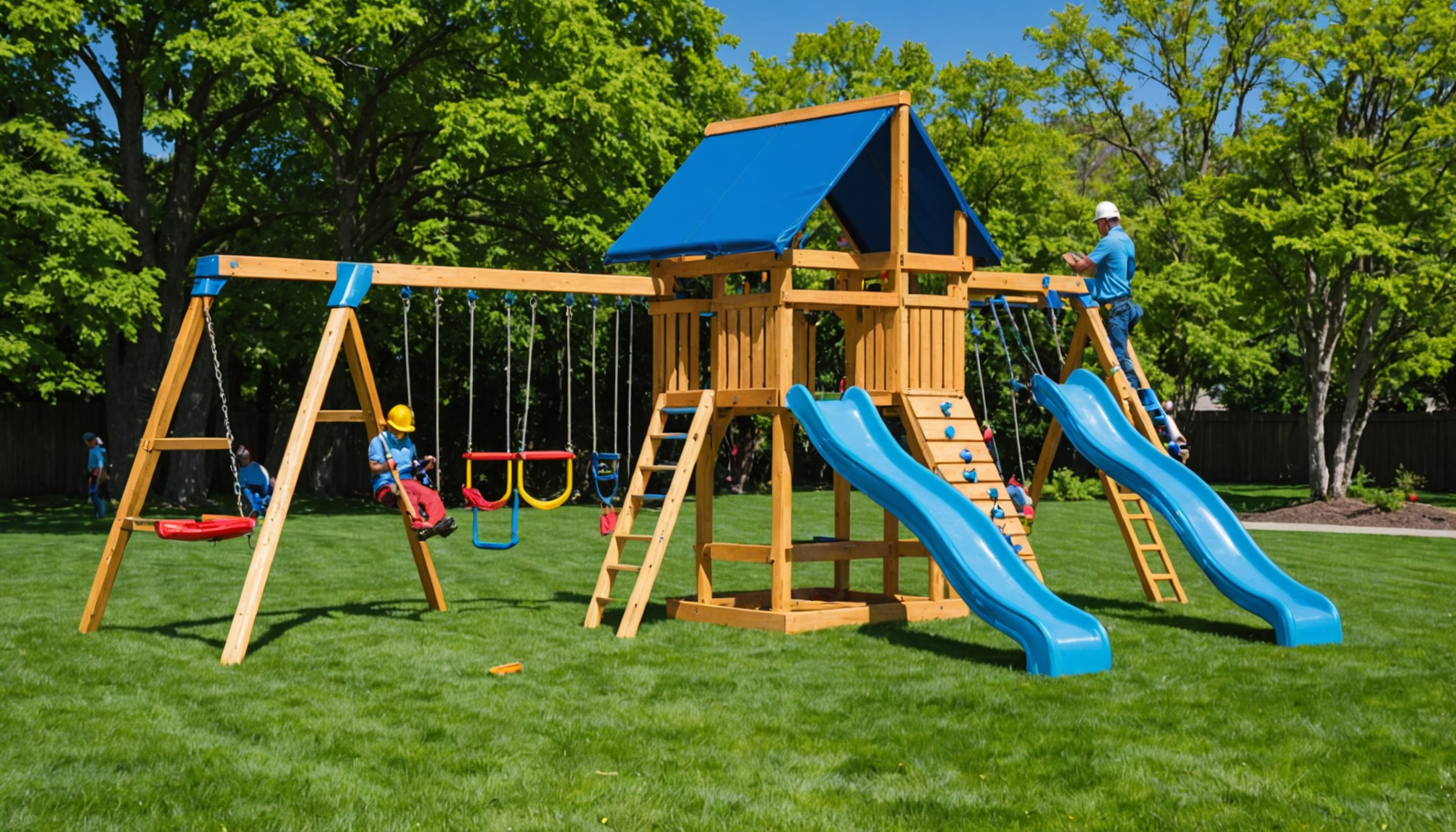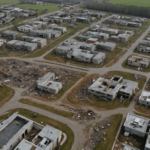When planning an outdoor playground installation, understanding the factors that affect overall costs is crucial to effectively manage your budget. Several elements can influence how much you’ll ultimately spend on creating a fun and safe environment for children. Recognizing these factors allows families and organizations to make informed decisions, ensuring they get the best value for their investment.
One of the primary considerations is the type and quantity of playground equipment. The diversity of options, ranging from simple slides to complex multi-level play structures, often dictates pricing. For instance, a basic swing set will typically cost less than a fully integrated play system with climbing walls and tunnels. The materials used in manufacturing these items—such as wood, metal, or high-grade plastic—also play a significant role in cost variance. Durable materials that withstand weather elements often come with a higher price tag, ensuring longevity and safety in an outdoor play environment.
Another critical factor is the size of the play area. Larger spaces require more equipment and ground covering, which increases both material and labor costs. Site preparation, such as leveling the terrain or adding safety surfacing, further affects pricing. Popular surfacing options include rubber mulch, sand, and engineered wood fiber, each offering different safety benefits and costs.
Additionally, the complexity of the installation process can significantly impact cost. Custom-designed playgrounds or installations in irregular-shaped yards may need specialized labor and equipment, leading to higher expenses. Obtaining the necessary permits and adherence to local safety standards can also incur additional costs, especially if professional consultations are required to meet regulatory compliance.
Logistical considerations, such as delivery fees and the distance from the manufacturer to the installation site, meaningfully affect the bottom line as well. Proximity to suppliers can reduce costs due to lower transportation expenses, making local sourcing an attractive option for budget-conscious families.
The table below provides a comparative overview of some common cost factors associated with playground installation:
| Factor | Influence on Cost |
| Type of Equipment | Simple structures cost less, while elaborate systems drive up costs. |
| Material Quality | Higher quality and durable materials are more expensive but offer better longevity. |
| Size of Play Area | Larger areas require more materials and increase labor costs. |
| Complexity of Installation | Custom designs and challenging site conditions can significantly raise costs. |
| Logistics and Delivery | Delivery fees vary based on distance and manufacturer locations. |
While numerous factors influence the cost of installing a playground, careful consideration and planning can help manage expenses without compromising on quality and safety. By understanding the cost drivers, families and organizations can create enriching outdoor play areas that either fit seamlessly into a backyard or enhance community spaces, ultimately providing ample opportunities for children to enjoy physical activities in a safe environment.
Types of playground equipment
When selecting playground equipment, it’s essential to consider the vast array of options available, each catering to different age groups, spaces, and thematic preferences. Understanding these types can help make decisions that align with your vision and budget.
1. Single-Use Equipment:
– Swings: A perennial favorite, swings come in various forms, ranging from standard belt seats to toddler bucket seats and even inclusive models designed for all abilities. Their prices vary accordingly, influenced by the number and style of swings included.
– Slides: These can be standalone or integrated into larger structures. Options vary from simple straight slides to spiral or wave slides, which add an element of excitement for children.
– Climbers: Climbers are designed to challenge children’s physical abilities and can include rock walls, ropes, and ladders. The complexity and material used impact the cost significantly.
2. Multi-Function Structures:
– Play Systems: These comprehensive units integrate multiple play activities into a single structure, often combining swings, slides, bridges, and tunnels. While they offer extensive play value, the cost can be higher due to complexity and size.
– Themed Play Structures: For creating a unique experience, themed playgrounds like pirate ships or castles engage children’s imaginations. Custom designs may elevate costs but provide a distinctive touch.
3. Interactive and Sensory Equipment:
– Music and Sound Games: These installations provoke auditory exploration, featuring chimes, drums, and other sound-producing elements. They support cognitive development and are perfect for inclusive play.
– Sand and Water Play Stations: Ideal for sensory experiences, these stations encourage tactile exploration and creativity, particularly suitable for younger children.
4. Fitness and Challenge Equipment:
– Obstacle Courses: Designed for older children and teenagers, these installations offer physical challenges with various fitness stations, encouraging balance, strength, and coordination.
– Ninja Courses: Inspired by popular athletic challenges, they cater to children who enjoy stimulating physical tasks, often replicating experiences from sports entertainment shows.
5. Inclusive Equipment:
– Adaptive Swings and Ramps: Emphasizing accessibility, these features ensure children of all abilities can enjoy outdoor play. Equipment designed with inclusivity in mind often requires special attention to detail, which can influence cost.
– Play Panels and Sensory Walls: Designed to engage children with different physical and cognitive abilities, these are often placed at accessible heights to ensure all children can participate.
Each type of equipment brings unique benefits and varies in cost. While some installations require minimal space and budget, others might demand more intricate planning and investment. Choosing the right combination of equipment can make an outdoor playground an enriching environment where children of all ages can explore, play, and learn. Thus, thoughtful selection tailored to the specific needs and interests of your target age group, alongside budget considerations, can transform any space into a vibrant community asset that supports outdoor play.
Site preparation and groundwork
Proper site preparation and groundwork are critical steps in ensuring a successful and safe playground installation. These foundational tasks set the stage for building an outdoor play space that not only provides enjoyment but also withstands the test of time and varying weather conditions. One of the key components in this phase is assessing and preparing the terrain where the playground will be situated. This involves several important considerations that impact both functionality and cost.
Initially, a thorough topographic assessment of the area is necessary to understand any slopes, drainage issues, or existing vegetation that might interfere with the installation process. Leveling the ground is often required to create a stable and even surface, which is essential for the structural integrity and safety of playground equipment. Depending on the site’s current condition, you may need to remove rocks, stumps, or other debris, which can add to the expense.
Once the area is level, attention turns to installing proper drainage systems. Effective drainage is crucial to prevent water accumulation, which can lead to equipment corrosion and unsafe play conditions. Poor drainage not only compromises the playground’s longevity but also poses safety risks, especially during heavy rainfall. Therefore, creating a system that directs water away from play areas helps in maintaining a dry and stable environment.
Investing in a suitable ground cover is another essential aspect of site preparation. The choice of surfacing material significantly affects the total cost and safety of the playground. Common options include rubber mulch, engineered wood fiber, and sand. Each material offers different benefits; for instance, rubber mulch provides excellent shock absorbency and is low-maintenance, while wood fiber is more affordable but may require more frequent replenishment. Selecting the right surface involves balancing cost considerations with the need for safety and durability, ensuring that the surface can adequately cushion falls and reduce injury risks.
Moreover, incorporating border materials to contain the surfacing can enhance both the aesthetics and safety of the playground. Borders help in keeping the ground cover in place, preventing it from spilling into adjoining areas and maintaining the neatness of the site. Common border options include plastic, wood, and metal edges, each varying in price and maintenance requirements.
Lastly, site preparation might also involve setting up utilities if the playground includes elements that require lighting or water. This aspect can be particularly relevant for public or community playgrounds where amenities such as lights for evening play or water features might be installed. Coordinating with local service providers for these utilities ensures the playground is both functional and compliant with regional building codes.
By providing the foundation for a safe and engaging outdoor play area, thorough site preparation and groundwork not only optimize installation costs but also maximize the long-term enjoyment for children and value for families. Adequately prepared sites decrease the likelihood of needing costly repairs in the future, supporting an efficient budget allocation and promoting a more sustainable playground environment.
Maintenance and safety considerations
Ensuring the longevity and safety of your outdoor playground is a necessity, requiring a consistent maintenance schedule and adherence to safety standards. Routine maintenance not only extends the life of playground equipment but also safeguards children from potential hazards. For a comprehensive resource on finding professional services for maintaining your playground, consider visiting LocallyFind.com, which offers a directory of reputable home service providers.
Regular inspections are the first line of defense against wear and tear. Conduct visual checks frequently to identify issues like rust, loose bolts, or worn-out materials. Pay special attention to the moving parts of swings and slides, which are most susceptible to damage. Replace any broken or damaged components promptly to prevent injuries. In addition to visual inspections, a more detailed audit should be performed at least once a year by a certified playground inspector who can provide professional insight into the safety and compliance of the equipment.
Another aspect of maintenance is ensuring the robustness of the surfacing material. As surfacing can degrade over time due to weather exposure and regular use, it’s crucial to refill or replace materials like wood chips or rubber mulch periodically. Keeping the ground cover at the recommended depth ensures efficiency in absorbing impacts, reducing the risk of injury during falls. It is also advisable to clear the surface of any debris and to check for surface irregularities that could trip children during play.
Safety considerations don’t stop at equipment and surfacing. Proper signage and supervision are pivotal to creating a secure play environment. Clear rules displayed at the entrance can advise children and guardians about safe usage practices, equipment capacity, and age-appropriate activities. It’s also beneficial to encourage adult supervision, which can deter risky behaviors and ensure immediate assistance if required.
Another essential safety measure includes checking for and managing any external environmental hazards. Overhanging branches or improperly pruned plants can pose risks; thus, regular trimming can prevent accidents. Likewise, monitoring for any pest infestations and taking necessary control measures is vital to maintaining a pleasant and safe playground environment for children.
Access to a safe and well-maintained playground can offer children vast opportunities for outdoor play, exploration, and social interaction, contributing significantly to their physical and cognitive development. By committing to periodic maintenance and adhering to stringent safety guidelines, families and communities can enjoy peace of mind, while providing their children with a secure and fun-filled outdoor space.
For those managing larger community or public playgrounds, partnership with maintenance professionals can be beneficial. Routine professional care ensures that all technical aspects, such as compliance with safety regulations and equipment function, are up to standard. Explore your options through LocallyFind.com to connect with local experts who can assist in preserving the quality and safety of your playground installations.
In conclusion, a proactive approach to playground maintenance and safety not only conserves costs over time but also enhances the overall play experience, ensuring families have access to safe outdoor environments where children can thrive.
Budgeting and cost-saving tips
Managing the expenses of playground installation effectively begins with a comprehensive budgeting strategy and exploring ways to reduce costs without compromising the project’s quality or safety. One of the most efficient ways to save money is by planning and prioritizing the essential elements your playground needs. Start by listing the equipment and features that are most important to the children and their play experiences. Distinguish between must-have items and those that are nice-to-have but can be postponed or added later. By focusing on core components, families can prevent overspending and gradually build their ideal play area over time.
When setting a budget, consider leveraging community resources or grants that might be available for public or community playground projects. Local government programs, non-profits, or civic organizations often offer financial support or matching grants to help fund such ventures, which can significantly enhance a project’s feasibility.
Sourcing materials locally is another practical cost-saving measure. Not only can this reduce transportation expenses, but it may also lead to discounts from suppliers eager to support regional initiatives. Additionally, forming partnerships with local businesses could result in sponsorship opportunities, where businesses contribute equipment or funds in exchange for recognition at the playground.
Opting for versatile equipment can also stretch a budget. Modular play systems that can grow and adapt offer long-term flexibility, providing different configurations and play options as children grow or as funds become available for expansion. Choosing equipment with multiple functions or adjustable features maximizes the play value without necessitating repeated expenditures for new installations.
DIY installation, when feasible, is a potential cost-saving option, provided it does not compromise safety and quality. Many manufacturers supply detailed instructions for self-installation, which can significantly cut labor costs. However, it’s crucial to acknowledge when professional expertise is necessary for complex installations or when compliance with safety regulations is imperative.
In terms of cost efficiency in site preparation, collaborating with volunteers for tasks like clearing the site, adding landscaping elements, or placing ground coverings can reduce expenses. Mobilizing the community not only lowers costs but also fosters a sense of ownership and involvement in the playground, enriching the experience for children and families alike.
Ultimately, strategic planning, resourcefulness, and community involvement play critical roles in managing the costs of playground installation. By exploring alternative funding sources, planning for gradual development, and making informed choices, families and communities can create vibrant, sustainable play environments that serve children well for years to come.
In conclusion, creating an outdoor playground involves more than just selecting equipment. By thoughtfully considering factors such as installation costs, site preparation, and ongoing maintenance, families and communities can ensure a thriving play space that promotes safety and enjoyment for children. With strategic budgeting and a commitment to quality, your dream playground can be both a doable and rewarding project that provides lasting memories for everyone involved.


